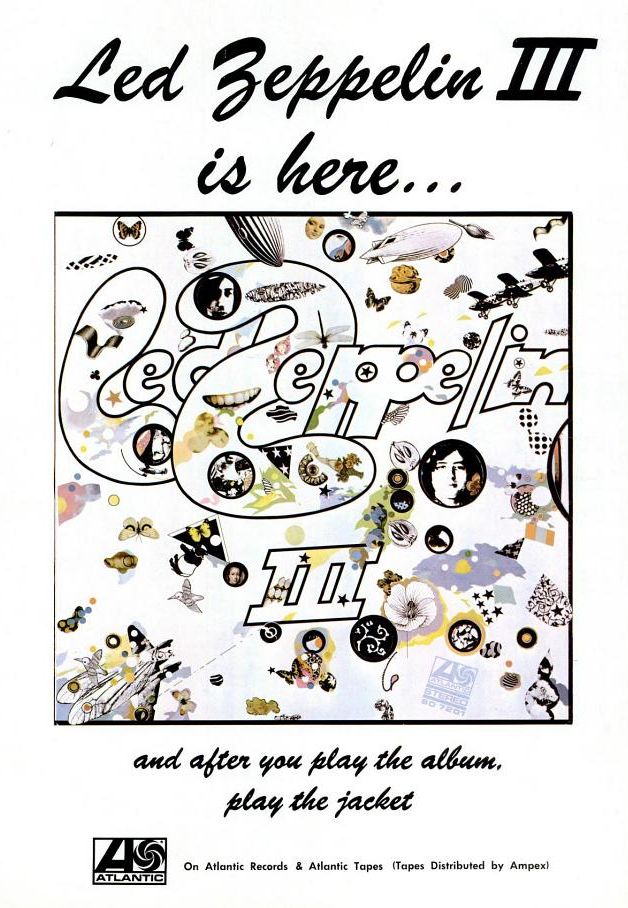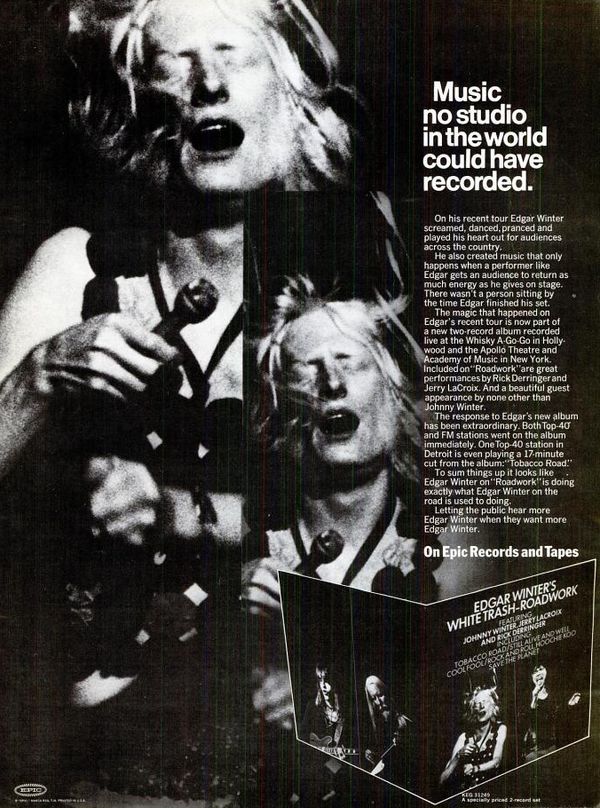
The early, much-romanticized years of the ‘70s -- when Lester Bangs was starting to inspire a generation of imitators – were a time when print advertising relied on a lot more words than it usually does today, and when it was one of the few means available to promote music to reach the rock & roll audience.
Few historical Rock & Roll documents can chart the musical fashions of a period better than an advertisement.



Some of the best advertising copy was for artists who had their own mythology would always appear in the popular rock magazines in the 70's. Flip through the music magazines published today, and the album ads that still exist are almost entirely image-based, or else feature a couple of quotes from favorable reviews. Which makes sense, given both the distribution changes for music, the shift in pervading ad styles—fewer words!—and the obvious pitfalls of trying to pitch records that the reader couldn’t yet listen to. The ad writers themselves, even in the ‘70s, were aware of the strange task before them.






























Rock in the 1970s
Corporate Rock
"The 1970s began as the decade of the rock superstar. Excess became the norm for bands such as the Rolling Stones, not just in terms of their private wealth and well-publicized decadence but also in terms of stage and studio effects and costs. The sheer scale of rock album sales gave musicians—and their ever-growing entourage of managers, lawyers, and accountants—the upper hand in negotiations with record companies, and for a moment it seemed that the greater the artistic self-indulgence the bigger the financial return.
By the end of the decade, though, the 25-year growth in record sales had come to a halt, and a combination of economic recession and increasing competition for young people’s leisure spending (notably from the makers of video games) brought the music industry, by this point based on rock, its first real crisis. The Anglo-American music market was consolidated into a shape that has not changed much since, while new sales opportunities beyond the established transatlantic route began to be pursued more intently.
In short, the 1970s was the decade in which a pattern of rock formats and functions was settled. The excesses of rock superstardom elicited both a return to DIY rock and roll (in the roots sounds of performers such as Bruce Springsteen and in the punk movement of British youth) and a self-consciously camp take on rock stardom itself (in the glam rock of the likes of Roxy Music, David Bowie, and Queen).
As the 70's rolled on, Rock was routinized, as both a moneymaking and a music-making practice. This had two consequences that were to become clearer in the 1980s. First, the musical tension between the mainstream and the margins, which had originally given rock and roll its cultural dynamism, was now contained within rock itself. The new mainstream was personified by Elton John, who developed a style of soul-inflected rock ballad that over the next two decades became the dominant sound of global pop music.
But the 1970s also gave rise to a clearly “alternative” rock ideology (most militantly articulated by British punk musicians), a music scene self-consciously developed on independent labels using “underground” media and committed to protecting the “essence” of rock and roll from commercial degradation. The alternative-mainstream, authentic-fake distinction crossed all rock genres and indicated how rock culture had come to be defined by its own contradictions." (Encyclopedia Britannica)











From The Guardian:

Billboard USA: when rock took over advertising's roadside monoliths
It all started with the Doors in 1967. That was the year that Jac Holtzman, head of Elektra Records (specializing in folk at the time), moved to Los Angeles when the label signed their first rock band, some newbies from Venice calling themselves the Doors. As Holtzman commuted up and down Sunset strip he wondered why the ubiquitous billboards looming over the famous thoroughfare seemed to advertise everything but rock’n’roll. So for $1,000 he decided to give it a try.
The Doors is now considered one of the most successful debut albums ever, launching the band of the same name to legendary status. But it also launched a 15-year span of rock’n’roll billboards, epic public art works documenting a critical era in rock music that began in the freewheeling 60s, shifted to the corporate era of the 70s then vanished with the coming of MTV.
The Doors billboard was a simple recreation of the album cover, an approach that became a standard for the genre. Art directors working for the labels designing the billboards were not encouraged to stray too far from the standard formula, though some campaigns in the early years defied expectations and baffled viewers, like a pair of oversized chrome pinballs with eyes painted on them. While it got the attention of motorists, not everyone made the connection to the Who’s Tommy."



![]()

YER MONEY OR YER EARS (Live 1983)


